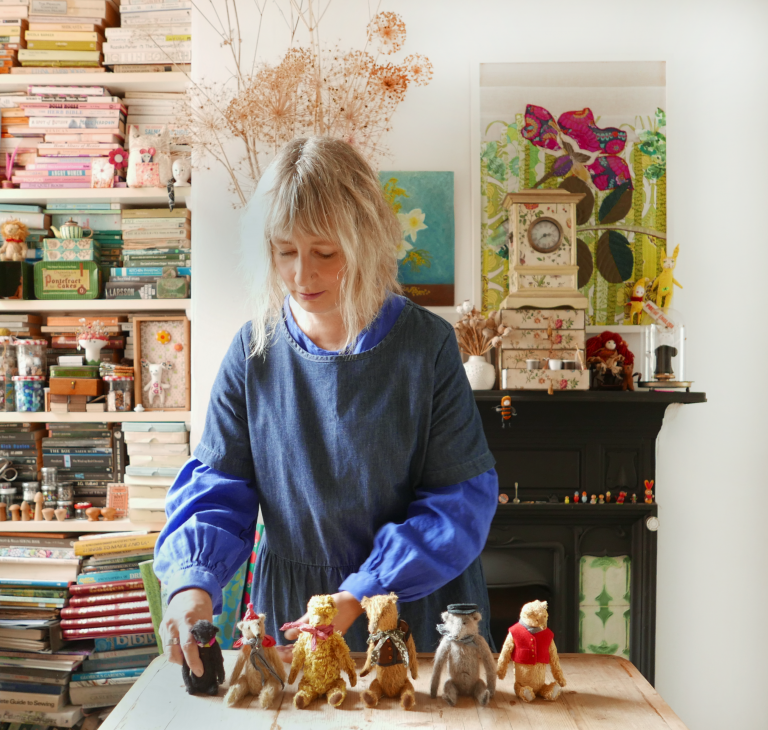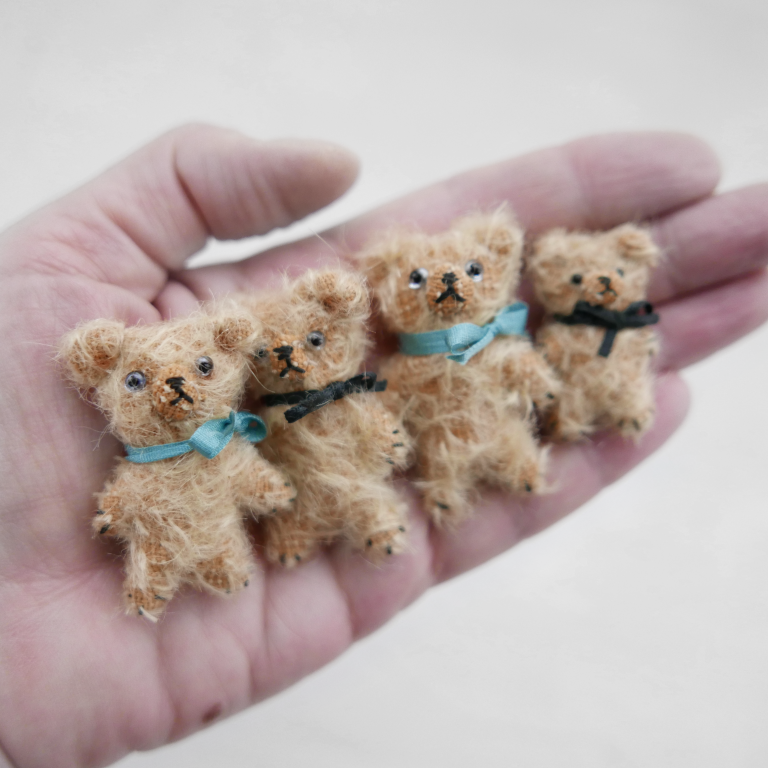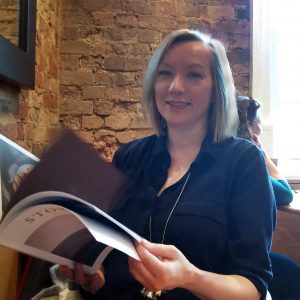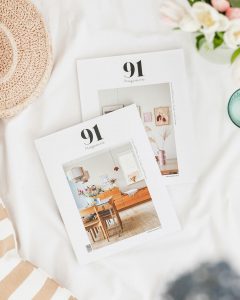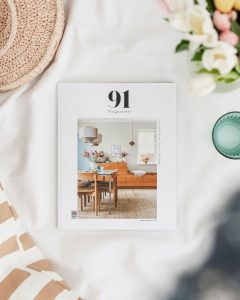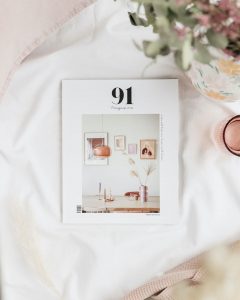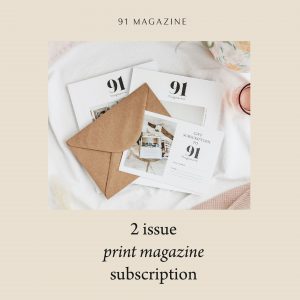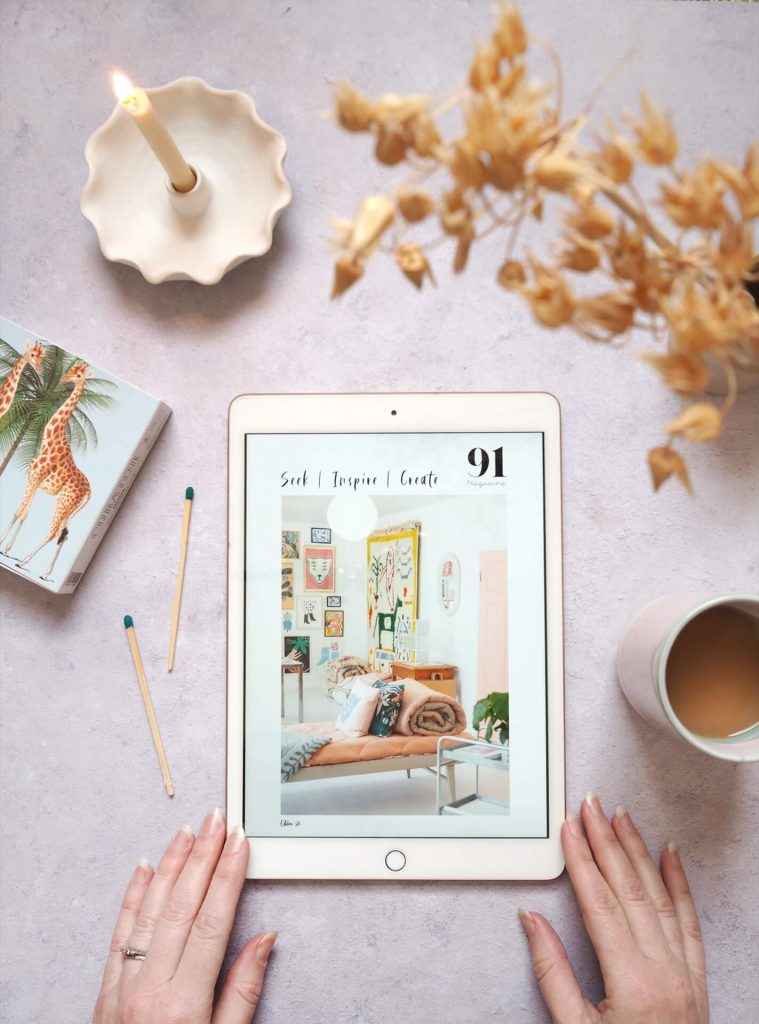Hi Sharon, how would you describe your work?
I design, sew and sculpt art dolls, miniature bears and other small, decorative creatures using mainly vintage and found fabrics. I try to make creatures who look as though they have secret lives of their own – and are busy living them when you’re not looking. Much of my work is tiny – I love working at a small scale – and it is for adults, not children. 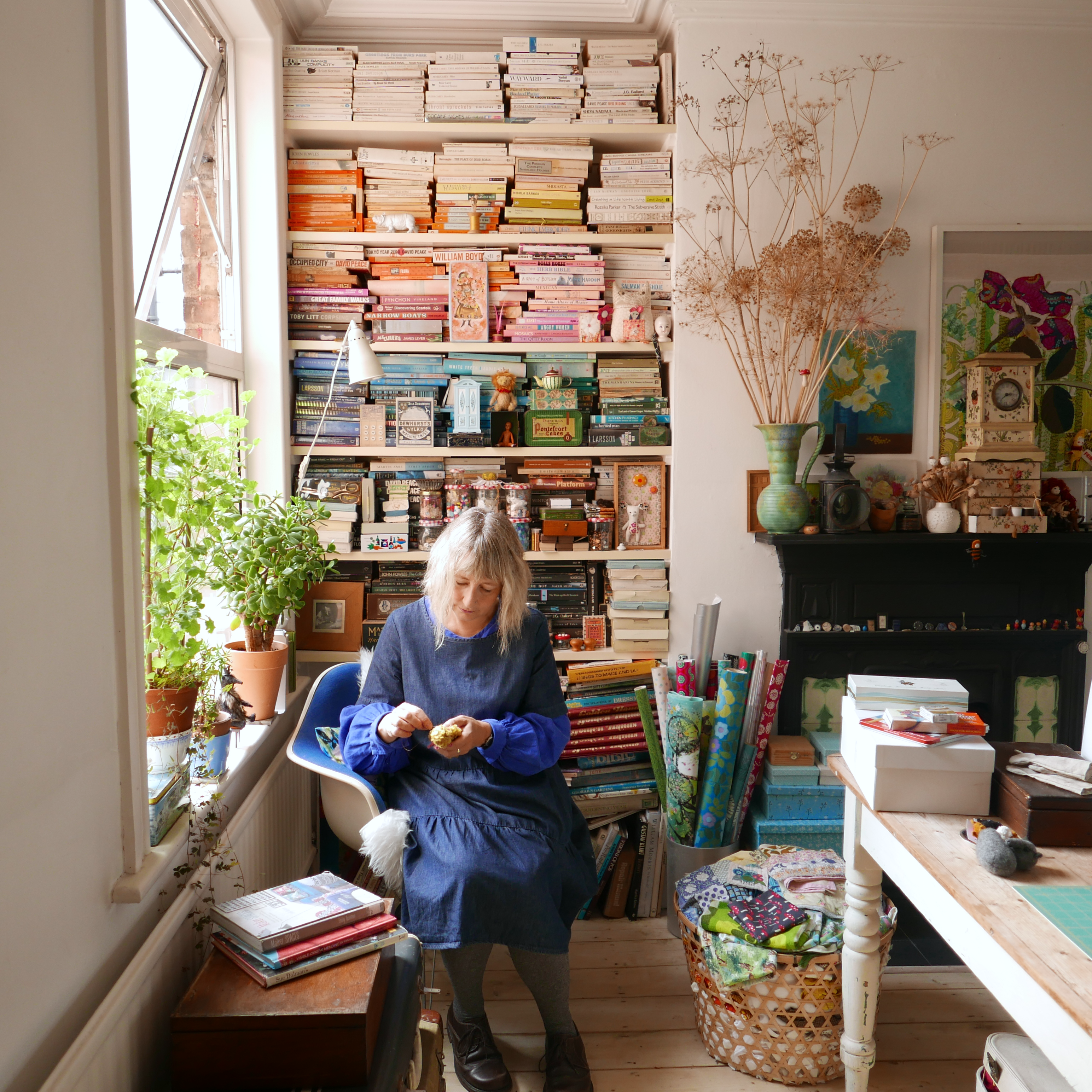
What inspired the idea of setting up modflowers?
In 2011 I found myself at the end of my tether in a job I hated, with no idea where to go next. I’ve always loved sewing, having been taught by both my Mum and my Nanna when I was very young and I’ve always been creative in one way or another. I had a collection of vintage fabrics. My parents had recently died and I wanted to be able to see more of my then-little boy (my job required very long hours in the office). I decided that life was too short to spend it in a horrible job and it was time for a change.
I started sewing cushion covers made from my fabric collection and took up patchwork again, which I had done as a child, selling the results on Etsy. Then I got a bit obsessed with handmade cloth dolls – so I learned how to make them, again using my vintage fabrics. I did a doll making workshop with artist Jess Quinn at the wonderful Hope & Elvis, which inspired me further. Having always loved making small things (I made accessories for my Pippa dolls as a child), my dolls just got smaller and smaller. Then the chance purchase of a bag of fabric scraps that had some vintage mohair fabric lurking inside inspired me to start making miniature bears.
What’s the story behind the name?
When I first started out the cushions and quilts I made were all created from my collection of vintage fabrics from the 1960s and 1970s – bright, bold florals in fabulous mid-century modern designs. So that was where the name “modflowers” came from.
I still use and am still inspired by vintage fabrics and materials, so even though the name doesn’t (usually) directly refer to what I make now, I still like it and it has stuck!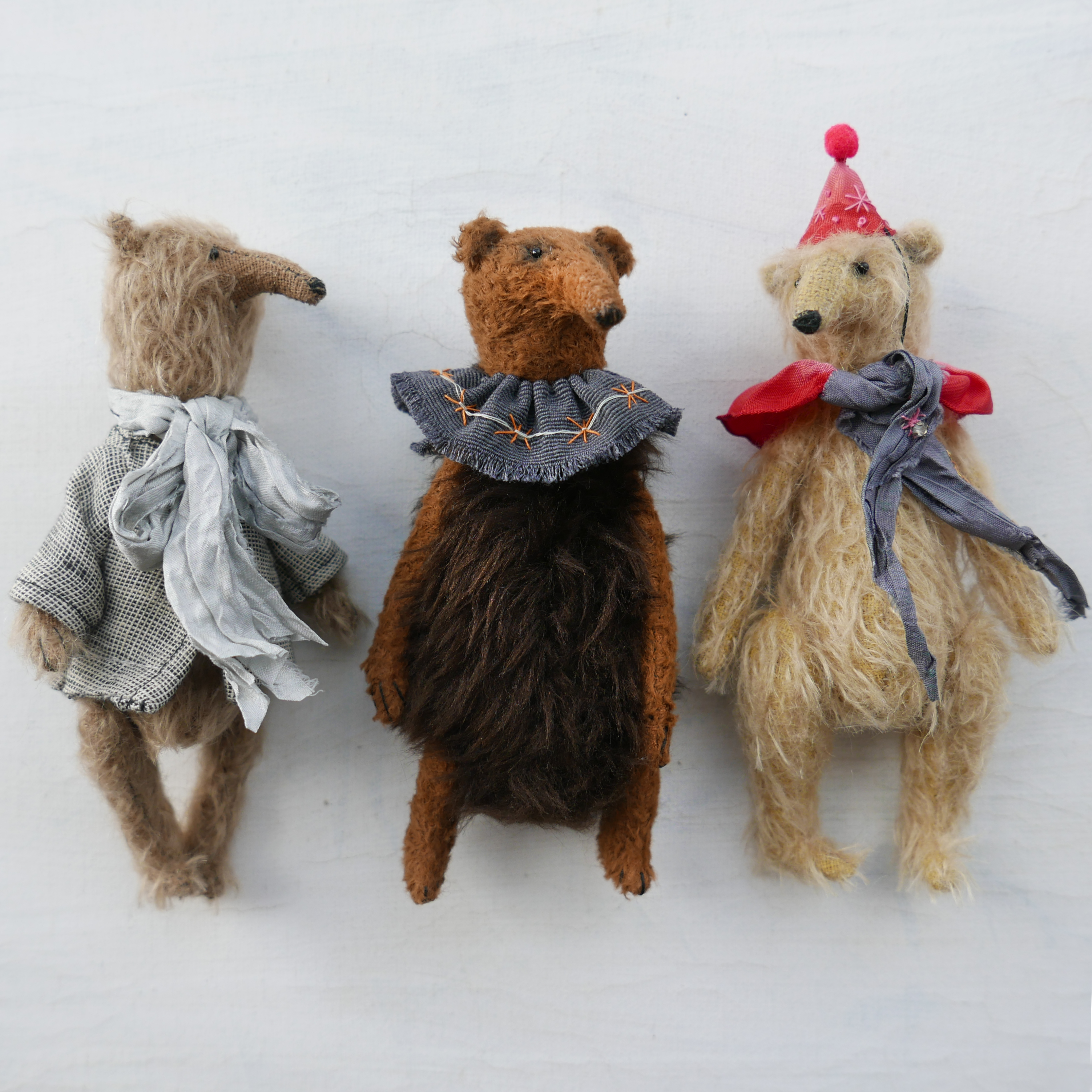
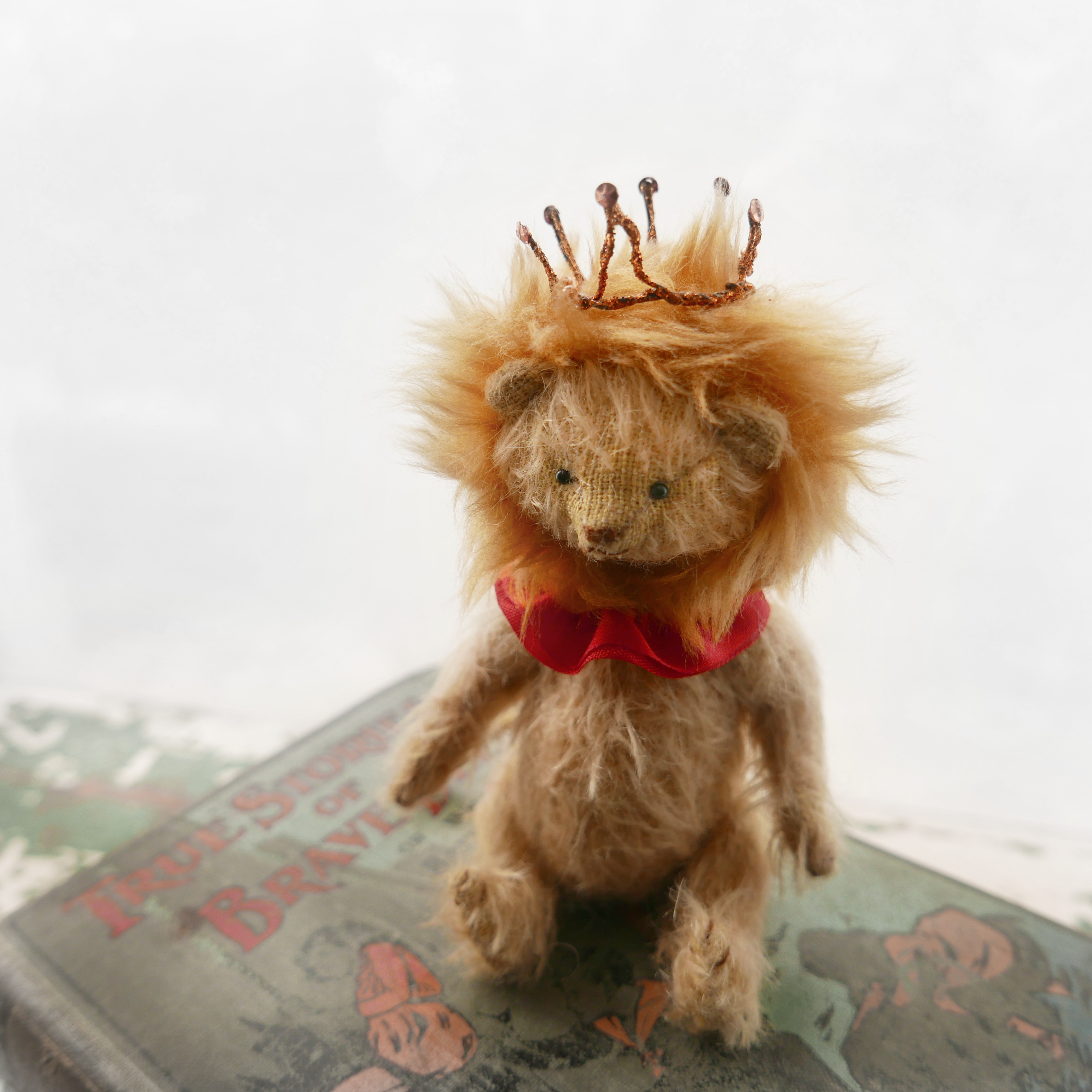
What did you do before setting up your business?
After a brief spell in independent retail, I worked in the public sector, managing grants and support programmes aimed at charities and schools.
Where do you find creative inspiration?
Often it comes from the fabrics I find. I’m addicted to rummaging in charity shops and at vintage fairs, looking out for materials that inspire me and suggest particular characters or outfits. As well as fabrics, I’m inspired by the books and novels of my childhood. My Dad was an avid reader of fantasy and science fiction and I was brought up on a diet of tales of the imagination, in which children stumble across magical creatures or things and have adventures, for example the Narnia books by C. S. Lewis; Four Children and It by E. Nesbit; Edward Eager’s books including The Time Garden and Half Magic, and John Masefield’s The Midnight Folk and The Box of Delights. I’ve always loved the idea that magic is all around us, under our noses, if we only have eyes to see it – we just need to know how to look!
I’m currently inspired by vintage teddy bears and old photographs of children with their teddies – I have a Pinterest board full of them! Bears are special: more than just toys, they are friends and confidante, and you can often see that in the photographs. I want adults to be able to connect with that feeling when they look at my creations and to rediscover their childhood imagination.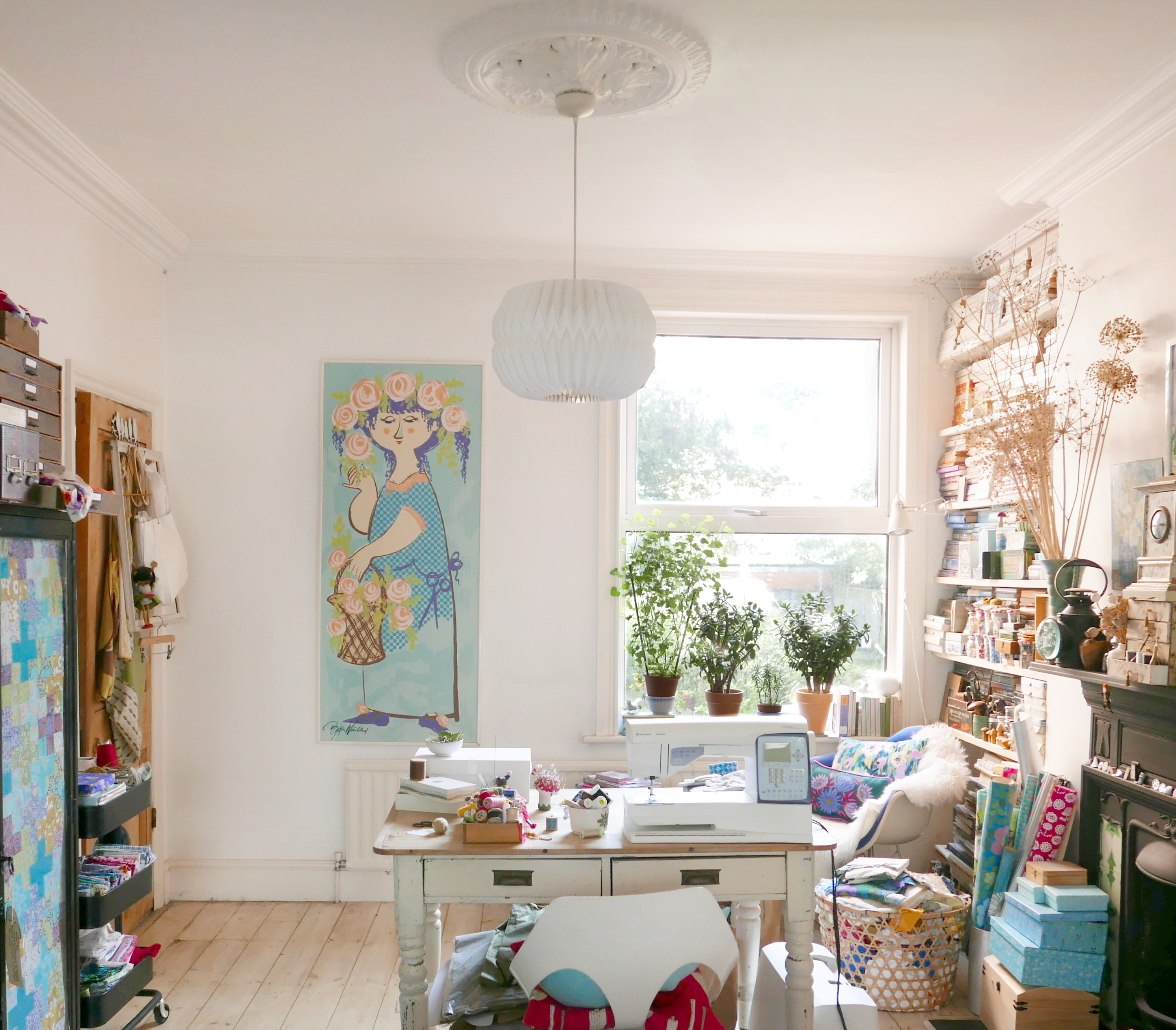
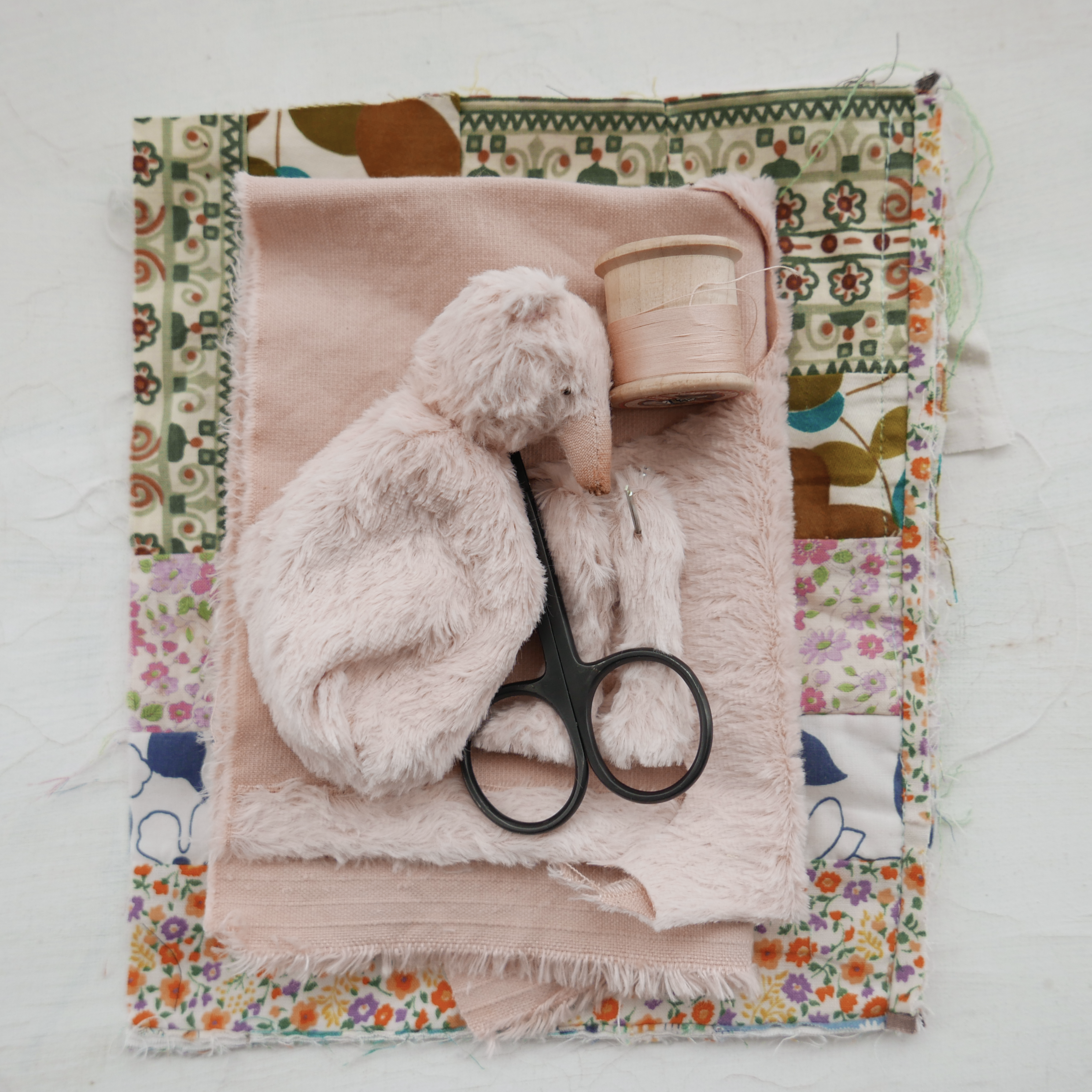
How would you describe your style?
I’m not sure how to describe it… I don’t really have one set style, as I quickly get bored of making the same sort of thing! It depends on the season, my mood, the fabrics I find and what I have available. I like a mix of old and new, vintage and modern, and this carries through my work, my clothes and my home too. I like things to be unique and individual, an eclectic mixture of styles, rather than conforming to any one particular style.
In my work, character is more important to me than style. When I make bears, I make each one individually from start to finish, rather than making several at once in batches, even though that might be more efficient. I find it more satisfying to work that way, as their looks and identity emerge as I work and each one develops its own unique characteristics. Some are personifications of children, some of adults. I like each one to have a back story, which comes to me as I sew, absorbed in creating their particular, individual personalities.
Are there themes that run through your work?
Definitely nostalgia, not so much for any idea of “the good old days”, but for childhood and the way children see the world: making up stories and finding anthropomorphic characters everywhere. As children we are encouraged to play and be imaginative, but we tend to lose this encouragement as we grow up, which I think is a shame. My work celebrates the whimsical on a tiny scale, inspiring us to look at the world through a child’s eyes and to use our imagination to bring magic and stories and playfulness into our daily lives.
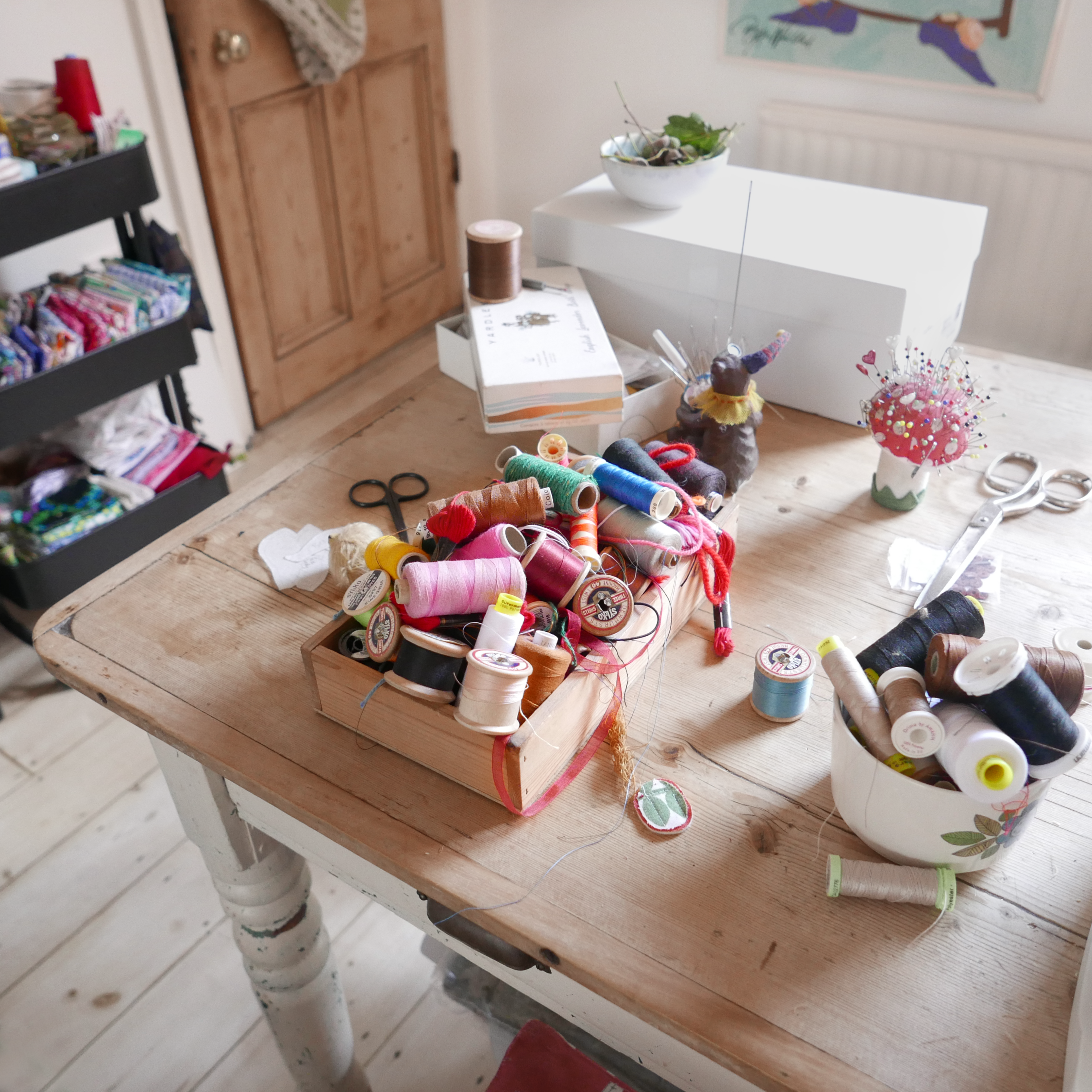
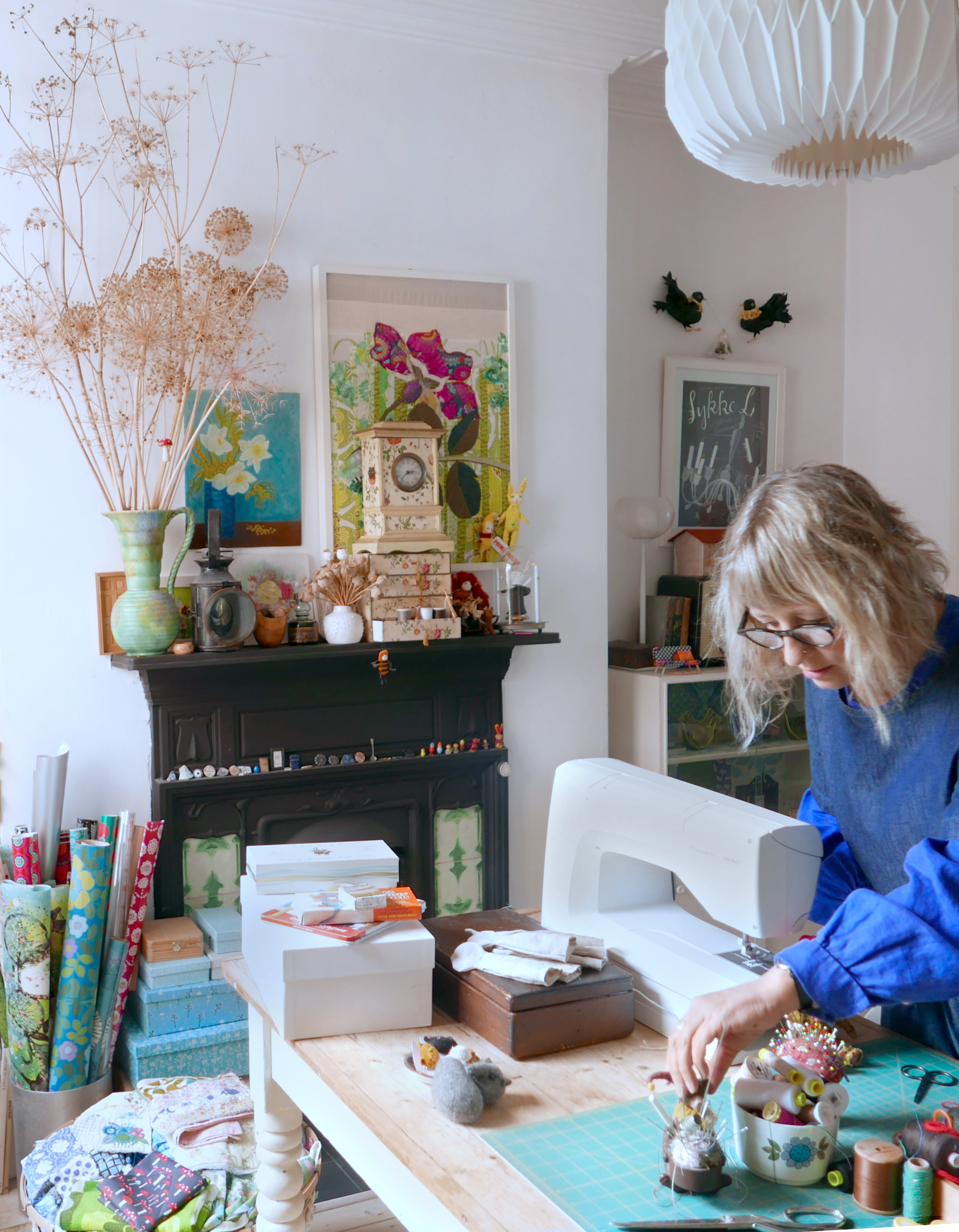
Describe a typical working day…
I get up, have two cups of strong Earl Grey tea, do a bit of housework and then I do a couple of online jigsaws to get me in the mood creatively (all that matching of colour and shape seems to help my creative mind get into gear). Then I look at my to-do list and dive into doing whatever needs doing (unless I get stuck procrastinating, which does happen!)
It might be drawing out or testing a new pattern; cutting out a new bear or doll, or continuing with sewing one already in progress. When I finish a bear I usually wait until the next day to make the clothes, so that I can choose fabrics for their tiny outfit with fresh eyes. Mornings, when the light is better, often involve photographing a recent make for social media, or sometimes writing a blog post, or heading to the local charity shops to see if I can find any inspiring new materials.
I tend to work until lunchtime and then take a break with my partner and son, who both mainly work from home, then after lunch it’s back to work until it’s time to tidy up for tea. My workspace is part of the living room, therefore it isn’t entirely my own, so although I am creatively quite messy, I do try to keep the mess under some level of control! I usually stop work when it starts to get dark, as sewing tiny things is tough on the eyes and I like to keep my evenings free for family time.
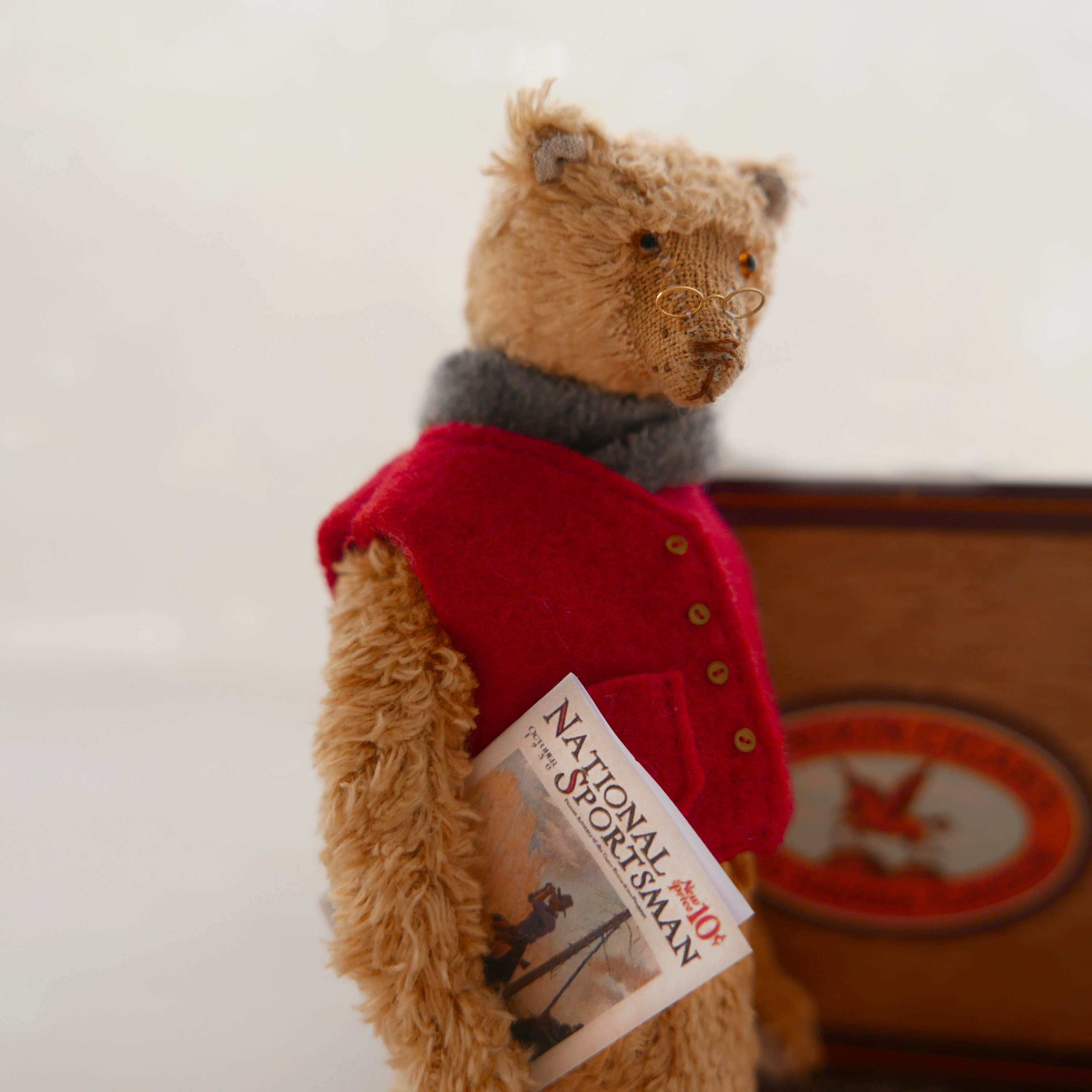
What are the values behind your business?
I definitely feel that small is beautiful and work small-scale in all senses – by supporting small suppliers and making small amounts of things, with the personal touch you can’t get otherwise. I wouldn’t want to mass produce, even if I could. It would take all the joy out of what I do. I only make what I like – I have to be inspired, I can’t just churn out work like widgets, or make the same thing over and over again, just because it sells.
I hate waste; reduce, reuse, recycle is my motto, hence my use of mainly vintage and discarded materials in my work. I try not to create waste myself and to think of ways to incorporate any I do create into future work instead, by using fabric scraps to make even tinier things, or repurposing snippets, e.g. as hair, or stuffing.
I value honesty, originality and a high level of quality: I would never sell something I’m not happy with and I make everything with great care. If a doll or bear doesn’t work out as I want it to I don’t bin it; I will keep it to one side and eventually I will transform it into something else.
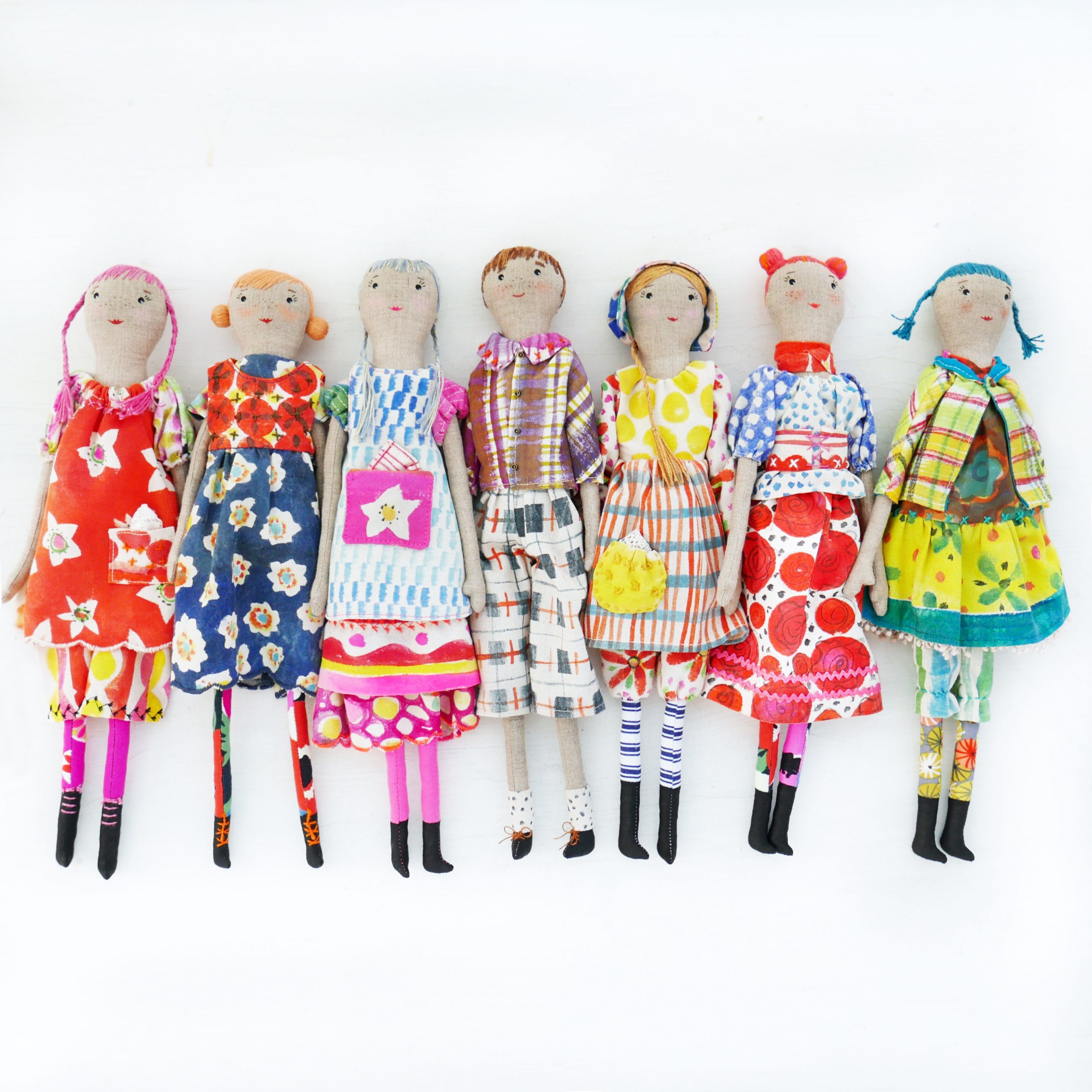
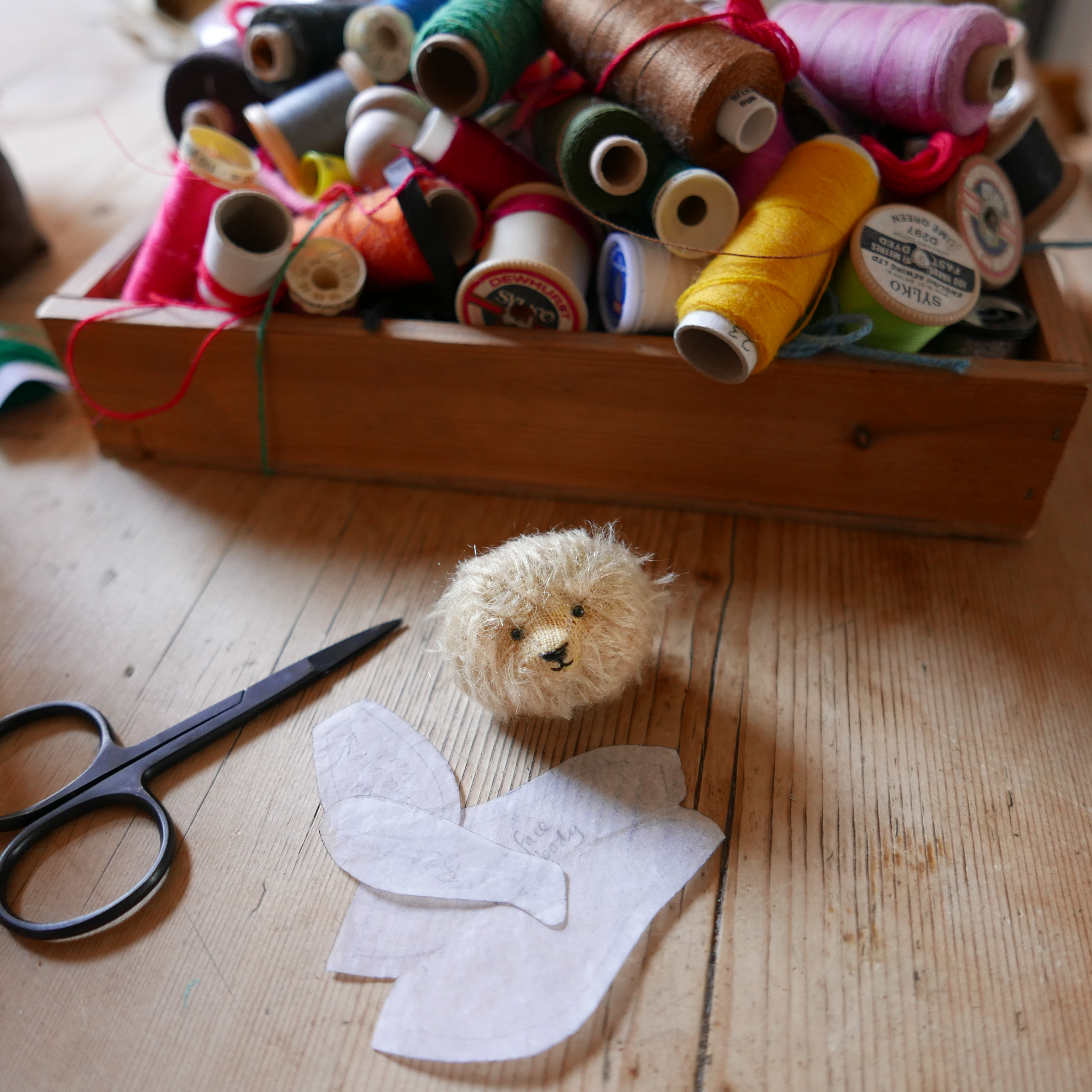
What sort of space do you work in?
My current workspace is the rear half of our living room. When we moved here our house had a separate sitting room and dining room, but we found that the back room wasn’t really used and just became a dumping ground. When I was made redundant some years ago, we used some of the money to knock the two rooms into one, so instead of a cramped living room and an indoor junk store we have a lovely large, light room.
My sewing machine, fabric collection, etc. are in the rear half of this room which has become primarily my studio. I have lots of things dotted around that inspire me, work by other artists, and bits and bobs I’ve picked up over the years. When I finish a new bear or doll, I put it on display on the mantelpiece until it’s time for it to go on sale. I can sit on the sofa and look at my creations and it’s like having my own constantly evolving exhibition.
In the winter I sit at the kitchen table to hand sew, as it’s much warmer in there. But it’s trickier, now that the whole family works mainly from home, to get undisturbed time and space for my making. I’m hoping to be able to install a small studio at the bottom of the garden in the not-too-distant future, so that I don’t have to stop work whenever someone wants to eat or watch telly!
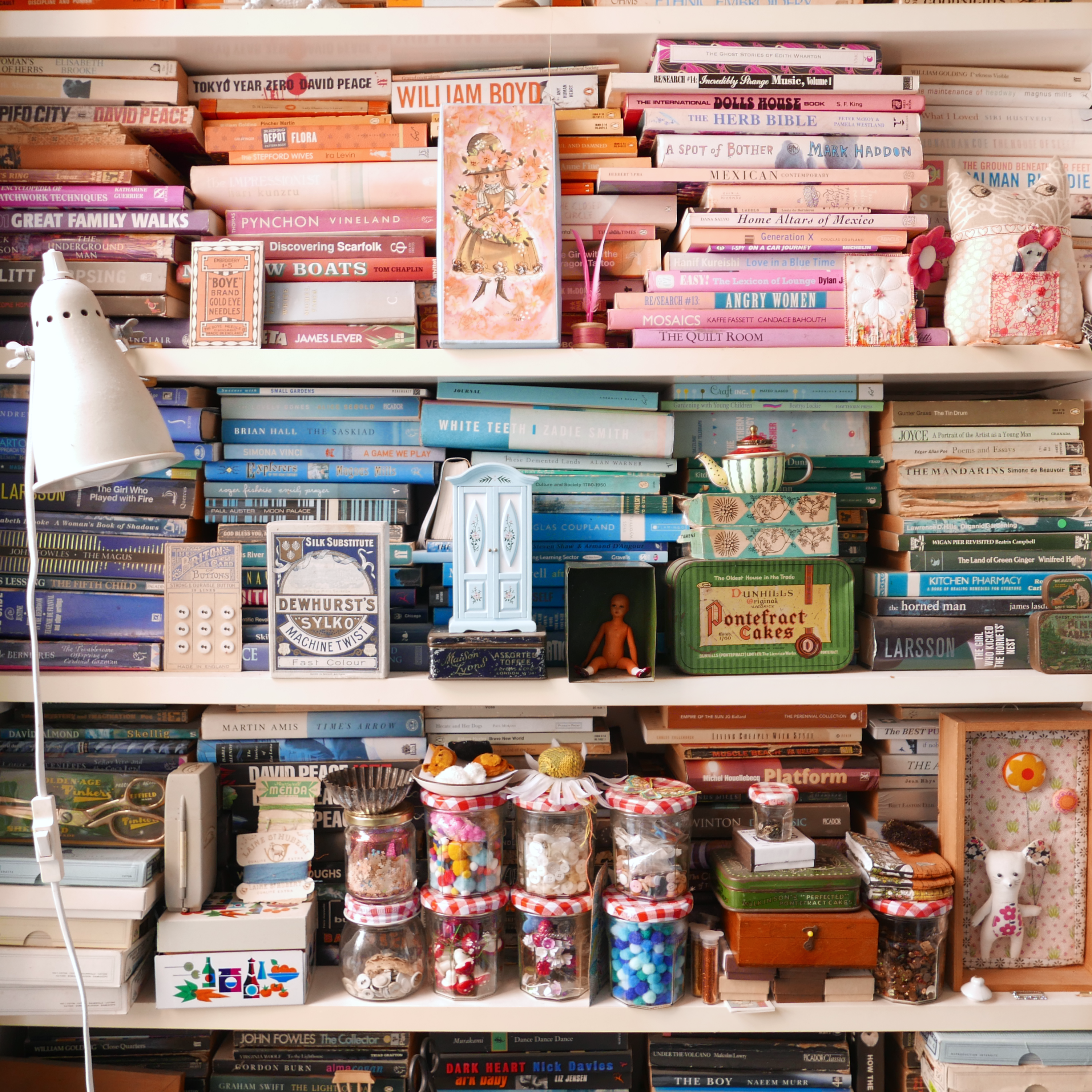
Tell us about your location and neighbourhood…
I live in a Victorian semi-detached house in Mapperley, Nottingham. The area is mainly famous for being the home of the county’s former asylum, which is just down the road!
I was born in Nottingham and when I was a teenager I couldn’t wait to get away, but I came back after graduating from university in Birmingham and have been here ever since.
Nottingham is a down-to-earth sort of a city, but there’s a great creative community here. In town, we have Nottingham Contemporary gallery and the area around Sneinton Market is buzzing with creative energy.
In my own neighbourhood there are parks, restaurants and bars just a stroll away and you can walk to the city centre in half an hour, yet take a ten minute drive in the other direction and you’re out in the countryside, so it has the best of all things on the doorstep really.
How valuable is the online community to your work?
I have made some really good friends in real life from connections originally made online, so I would say that it’s very valuable – and it was an absolute sanity saver during the Covid lockdowns. My partner and son aren’t particularly interested in what I make (they are keener on football and snooker!), so connecting online with others who share my passions is just fantastic. However, it’s all too easy to get sucked into Instagram or Facebook or browsing Pinterest at the expense of actually making anything, so I try really hard to balance my online life with my real life; I don’t want to live entirely online!
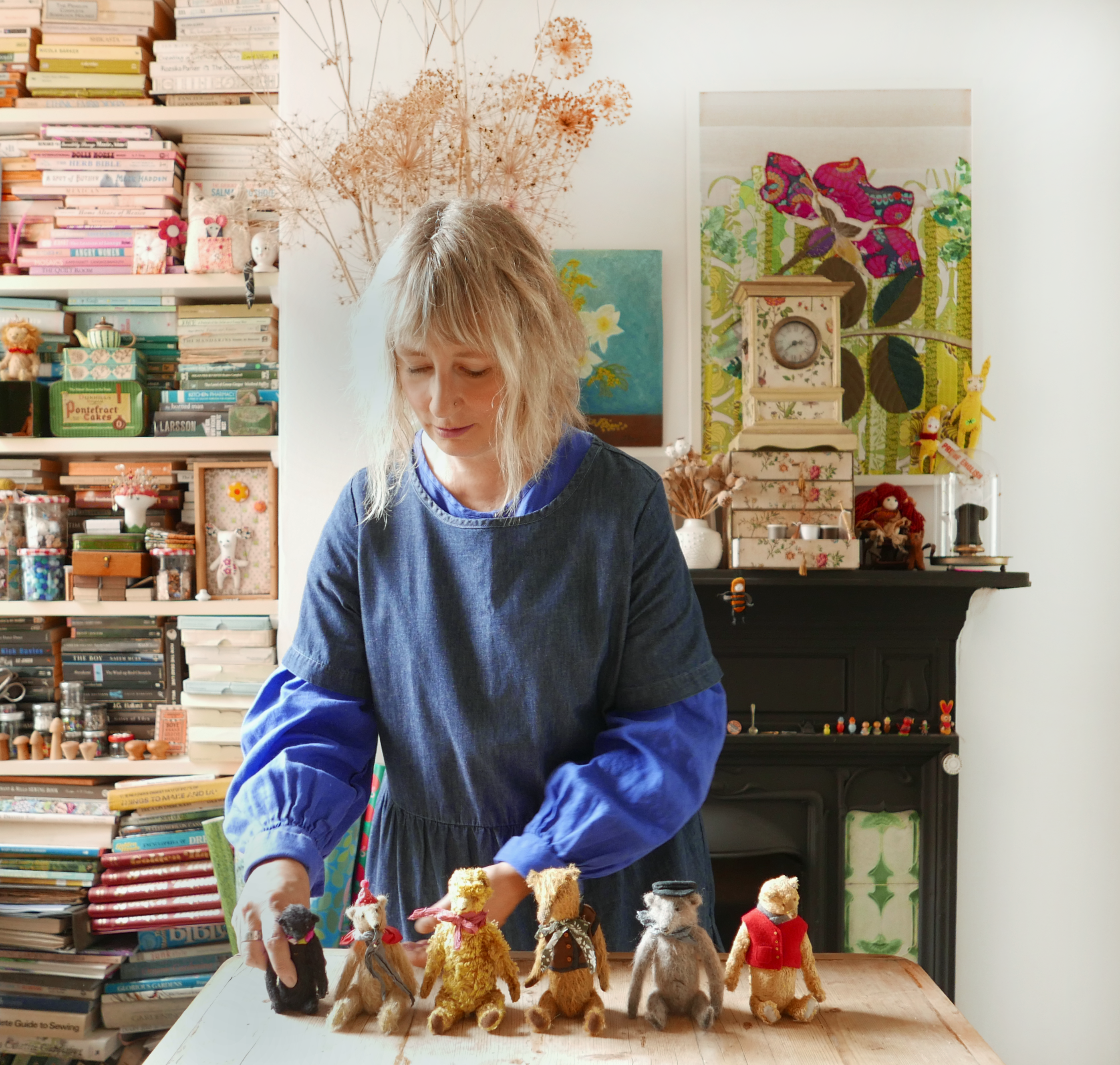
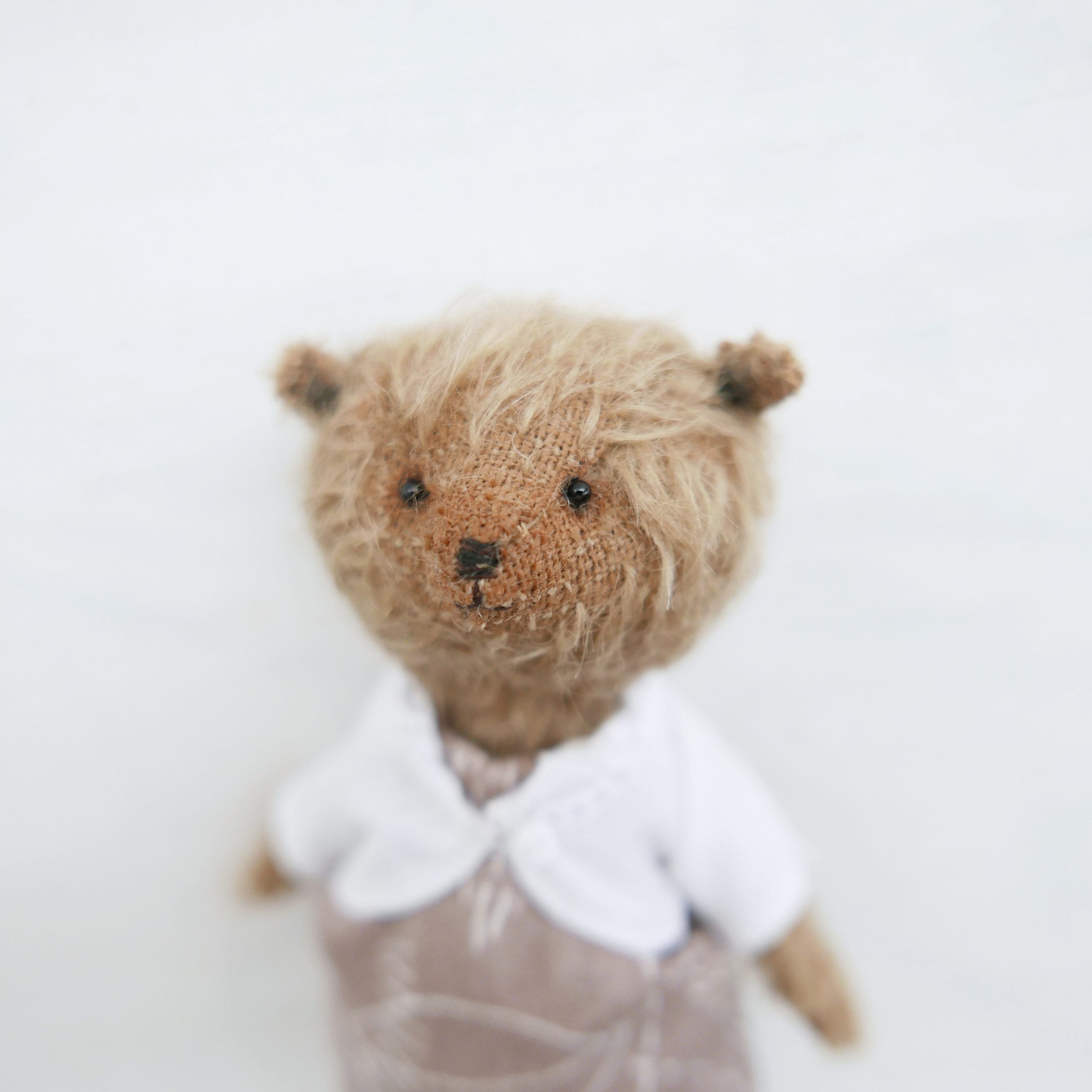
Working as an independent maker – what are the joys, and what are the challenges?
This is what I often blog about! The utter joy for me of finding my creative “flow”, when the ideas come and my hands seem to have a will of their own, conjuring up creations that I am proud of, is just the best thing. Not having to answer to an unreasonable boss, or meet impossible targets, or put on uncomfortable shoes and leave the house in the dark and wet and cold at the crack of dawn in winter, to instead be able to manage my own time, make my own decisions and be at home whilst my son was growing up, well that’s all been pretty darn good too.
My main challenge is fairly frequent attacks of “makers’ block” – an absence of ideas and creativity that can last for days, weeks, or even months sometimes. It is crushing to simply not be able to summon the will to make, when you really want to. I don’t know why it happens, but it does and I have learned to live with it and accept it, to try to “work around” these fallow periods and not be too hard on myself about it, as that doesn’t help.
During and since lockdown, finding the physical space at home to make undisturbed, so that I can really immerse myself in my work, has been something of a challenge. Not being good at everything and not knowing where to turn for help can also be a problem. But real life and online friends have been great in offering support when I really need it.
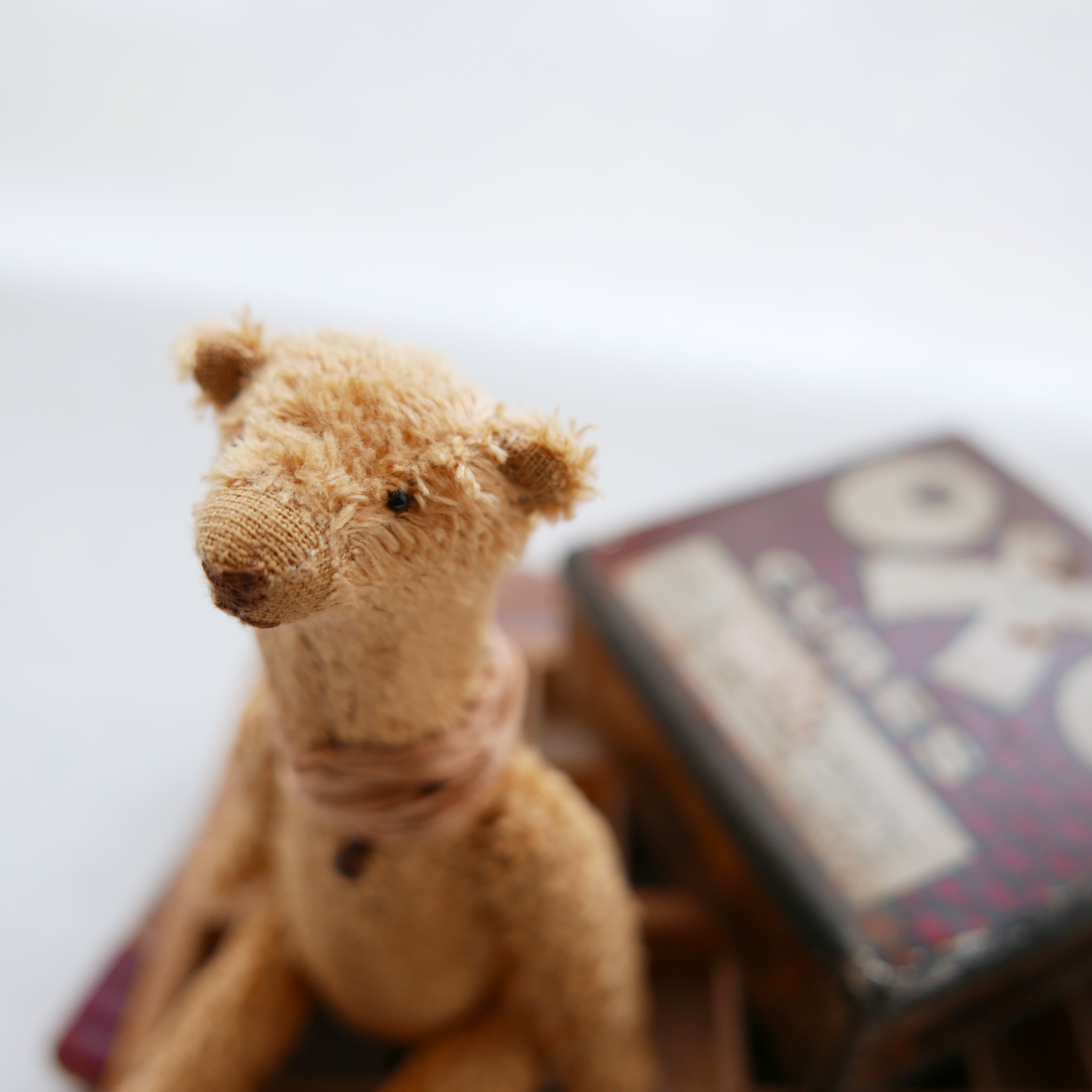
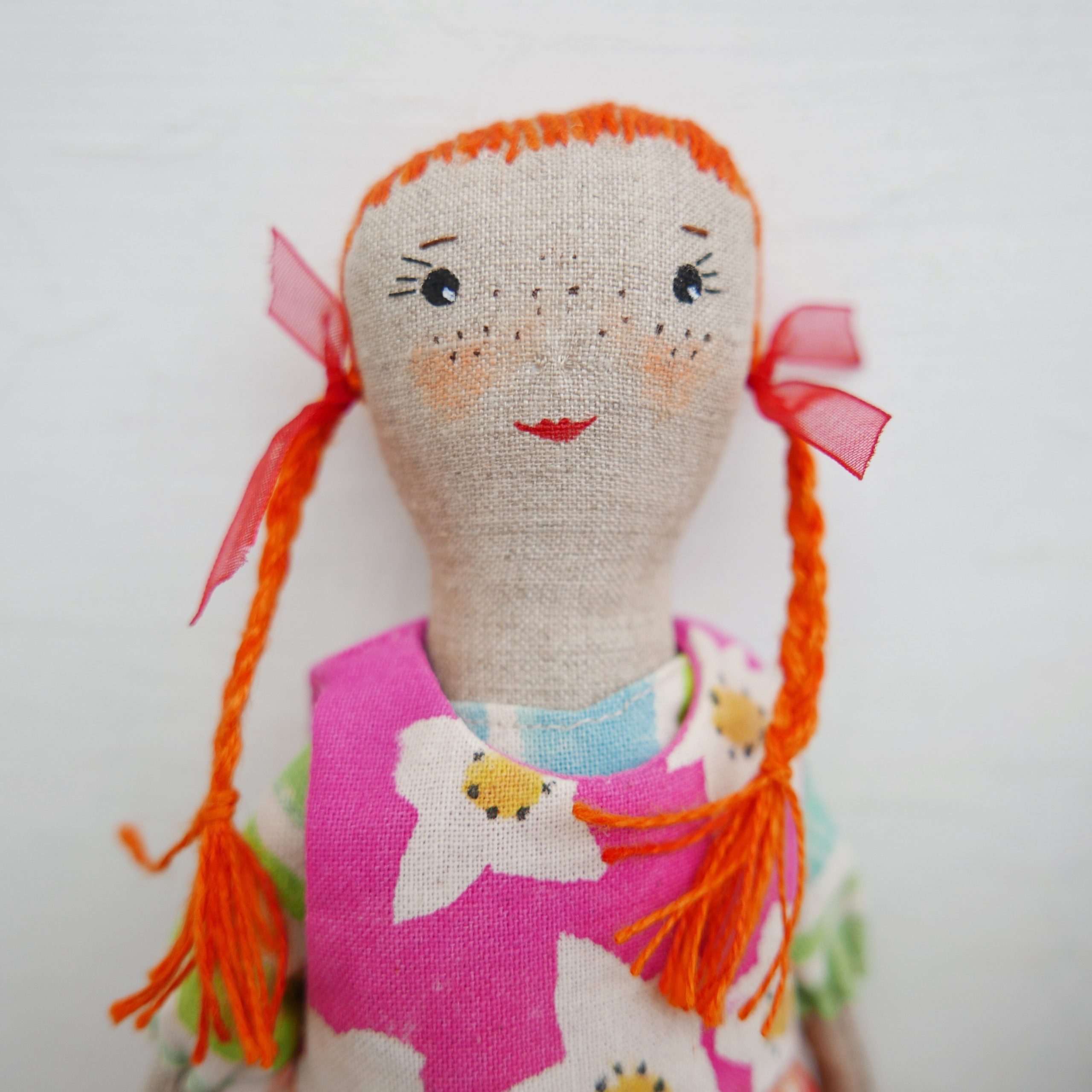
What has been the greatest hurdle in starting your own business?
Not being very good with either finance or web design/IT. They are talents that I really wish I had. It would make life SO much easier.
How do you approach marketing and PR?
I don’t mind marketing. However, there’s always a conflict over what is the best use of my time: making things or marketing them. It’s easy to get burnt out over time and find the need to constantly post on social media about what you’re doing turning into a chore. I’m not hugely organised about it and sometimes I lack inspiration and feel like I’m repeating myself.
I don’t have the budget for paid advertising, so social media is important to me, to get my work seen. I’ve taught myself to take decent photographs, but the current trend towards videos over still photographs is not something I’m happy about… I have high standards and I’m no film maker! I don’t like being in front of the camera and I find making videos or animations even more difficult and time consuming than photographing things.
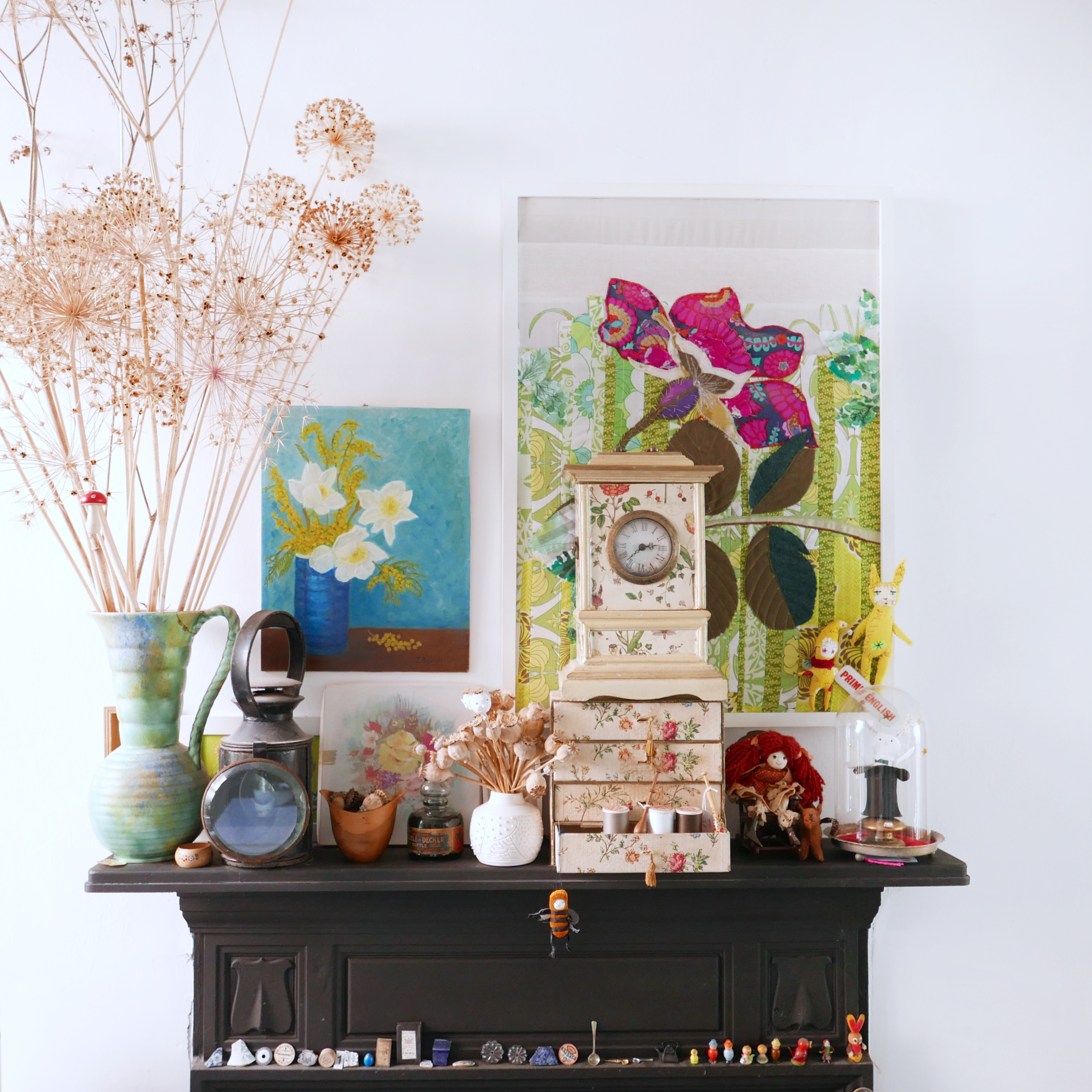
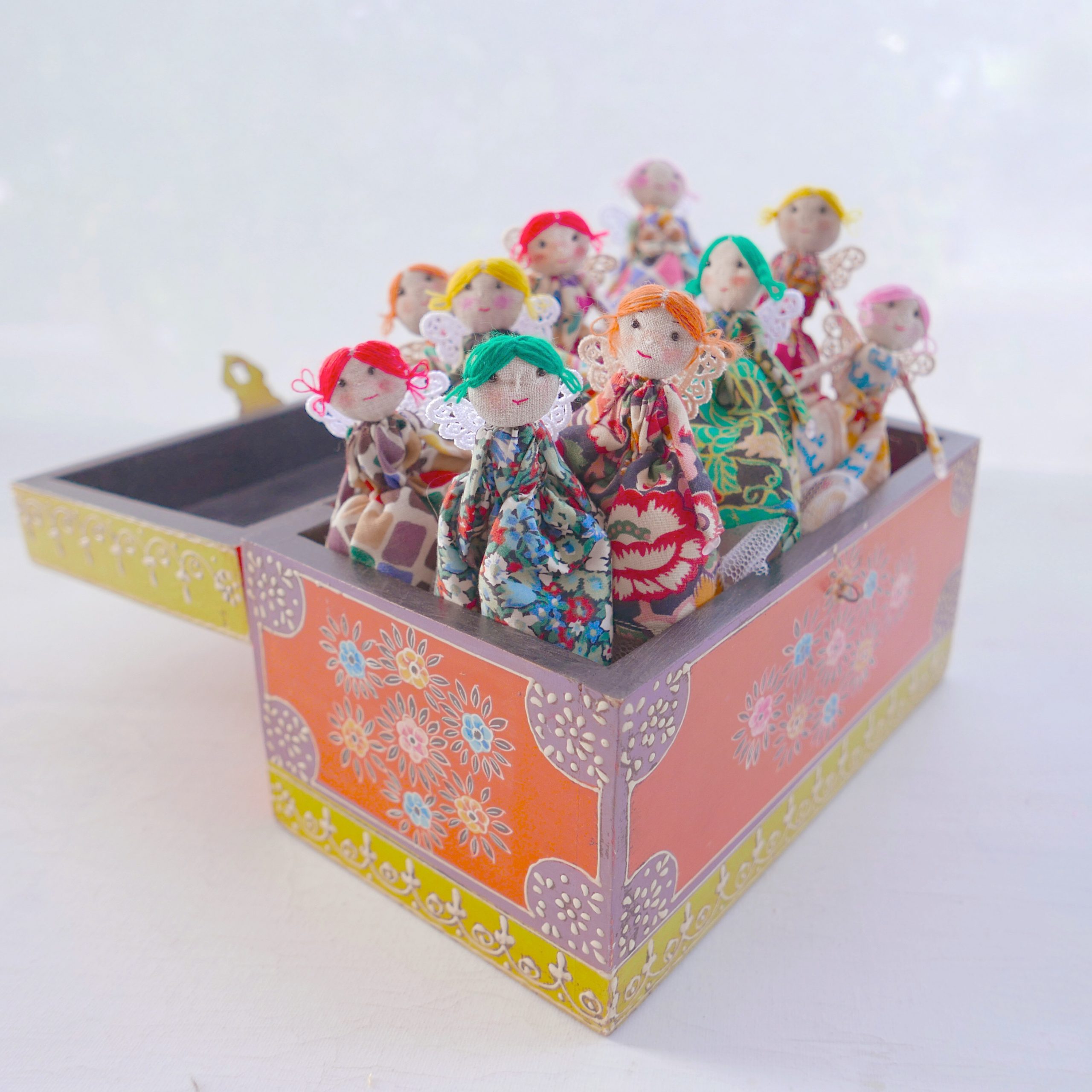
What have been your business highlights so far?
Without doubt, working with artist and designer Sarah Campbell, a long-time design hero of mine, has been an absolute highlight. Sarah and I “met” online via reading one another’s blogs and she got in touch to ask me to make some dolls from fabrics she had designed.
This led to my being invited to the private view of The Art of Pattern, part of the Liberty In Fashion exhibition at the Fashion and Textile Museum in London in 2015, celebrating the history of Liberty & Co. Sarah (with her sister Susan Collier) designed fabrics for Liberty for many years and my dolls, dressed in archive fabrics from Sarah’s own collection, were included in the exhibition and also sold in the museum shop.
Another highlight, also via my connection with Sarah, was having my dolls sold in Anthropologie’s Kings Road shop in London in 2020.
Where do you sell your work?
I have an Etsy shop. I tend to make dolls and bears until I have a small collection ready on my mantelpiece, then I announce to my email subscribers and online followers when they will be going on sale. They usually sell out, and I begin the cycle of making all over again.
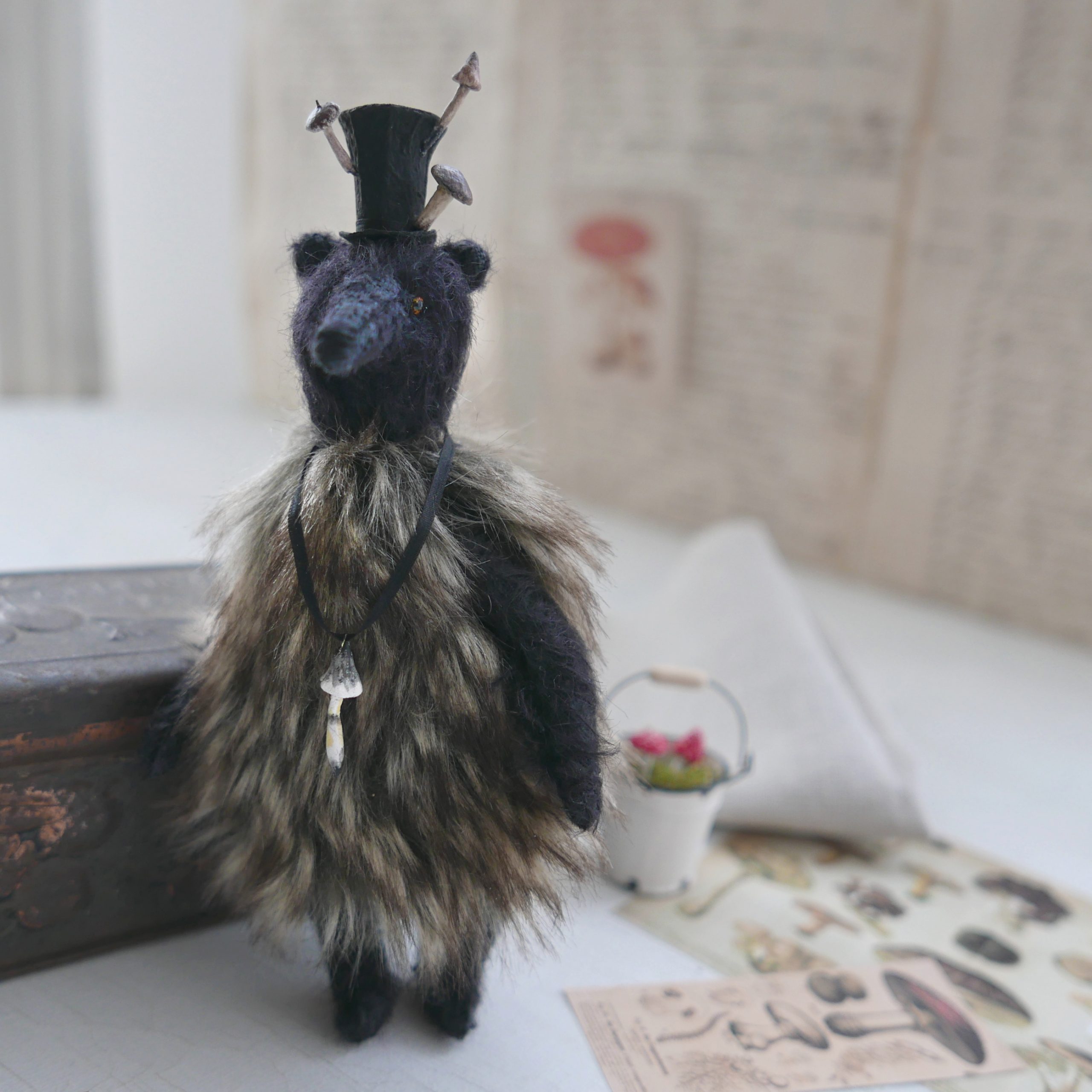
Do you have any creative pastimes or hobbies?
I love gardening, though it’s more about pottering about outside than growing anything particularly edible or spectacular! We have a wonderful nursery not too far from where we live and I love to go there and fantasise about buying ALL their beautiful plants and cramming them into our garden!
I still do patchwork from time to time… during the first lockdown I made a quilt top from all the tiniest bits of fabric in my scraps bag (everything I do just ends up getting smaller!)
Any good advice for makers just starting out?
I don’t consider myself any kind of expert, so I’m not sure how well qualified I am to give advice! But I think the best thing I can think of to say to any maker starting out is not to be too hard on yourself and not to give up. At first, you may feel that you don’t really know what you’re doing and what you make may not be as good as you want it to be, which can be disheartening. When I started making bears, I knew in my mind’s eye how I wanted them to look but I just didn’t have the skills, so I was constantly disappointed with my own work – even when other people liked them. I kept at it and my work got better. So instead of being overly critical of your failings, try to nurture your skills, enjoy the process, keep on learning, reading, practising and connecting with others, and above all keep on making!
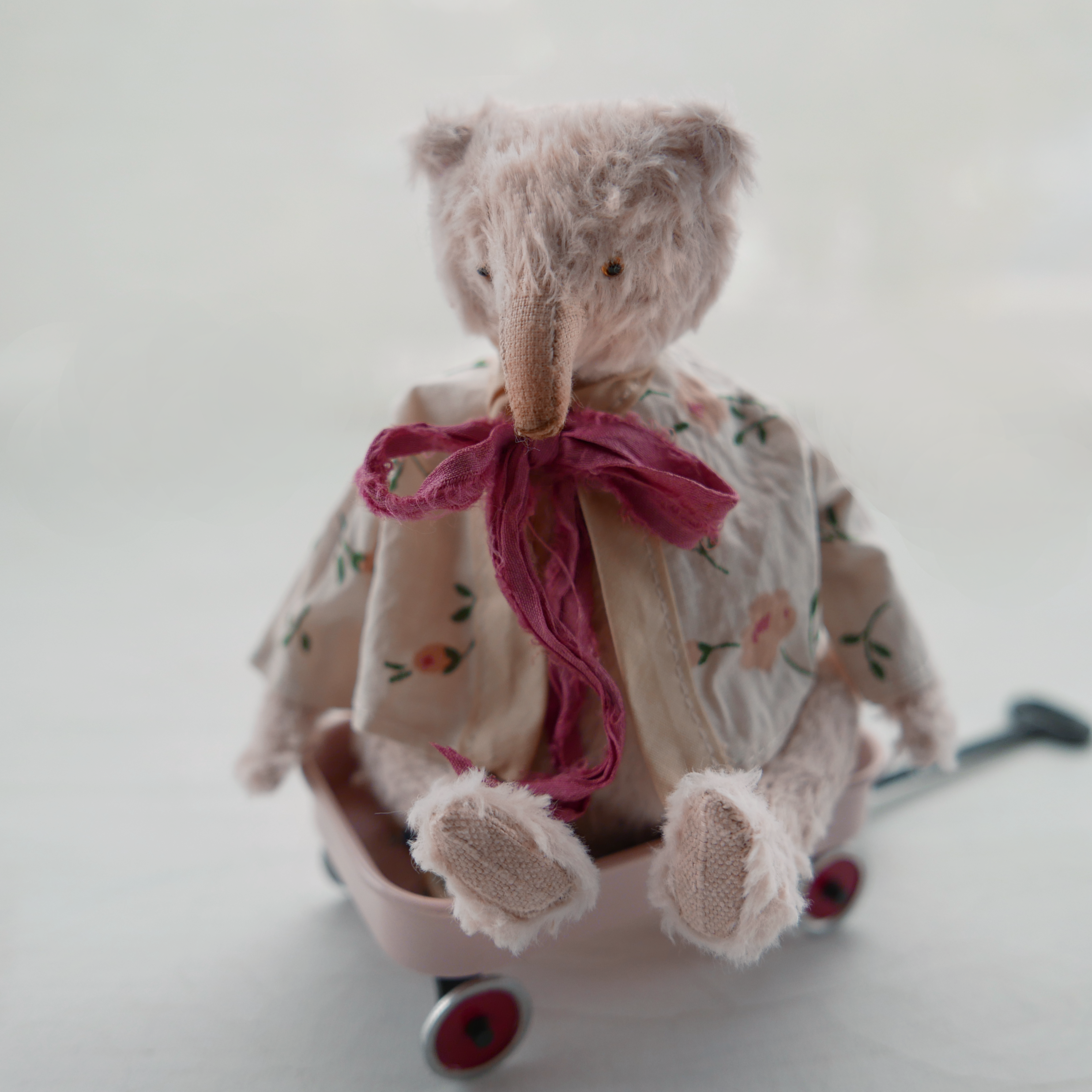
What does the next year hold for you?
I don’t really know… I’ve never known! And the times now feel so unpredictable! I would dearly love my own making space, a little garden studio, if finances allow. That’s my goal for the next year, to make that happen. I just need to work out how!
QUICK-FIRE QUESTIONS
Describe your work in three words: handmade fabric creatures
What are your creating rituals? First, I’ll do some online jigsaws and have my two cups of tea (always Clipper Earl Grey, with soya milk). Ideally, I’d like an empty house (but failing that, no interruptions) and the whole day ahead of me. And I’ll have BBC Sounds on my laptop whilst I sew, with a drama or podcast, or a few episodes of The Archers to catch up on. If the weather’s nice I’ll have the doors in the kitchen open and I’ll keep popping out into the garden for breaks, because staring at very small things for long periods can be hard on the eyes.
Tea or coffee? Tea every time – I don’t like coffee!
Mountains or sea? Sea. But viewed from land, I get seasick.
Night owl or early bird? In my youth: night owl. Now: early bird.
I wish someone had told me… Learn to not care so much about what other people think and you’ll be much happier.
